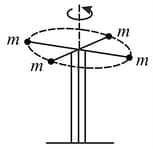Calculation the angular momentum about on the axis of rotation in following cases.
(i) 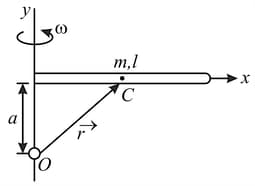 (ii)
(ii) 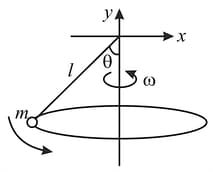
(i)
 (ii)
(ii) 

Important Questions on Rigid Body Dynamics: Part 2
Calculation the angular momentum in following situation a disc is connected with a rod mass and length; The disc is free to rotate about its own axis. If whole system is rotating with and disk also rotate about its own axis with then calculation about origin.
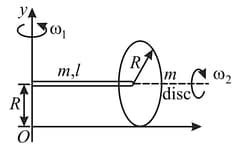
A disk with moment of inertia rotates about a frictionless, vertical axle with angular speed . A second disk, this one having moment of inertia and initially not rotating, drops onto the first disk (figure). Because of friction between the surfaces, the two eventually reach the same angular speed , calculate .
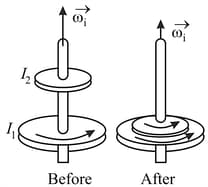
A small block of mass is attached to a cord passing through a hole in a horizontal frictionless surface. The block is originally revolving in a circle of radius about the hole, with a tangential velocity of . The cord is then pulled slowly from below, shortening the radius of the circle in which the block revolves. The breaking strength of the cord is . What will be the radius of the circle when the cord breaks?
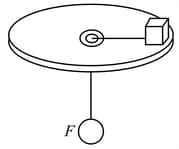
A man of mass stands at the rim of a turntable of radius and moment of inertia mounted on a vertical frictionless shaft at its centre. The whole system is initially at rest. The man now walks along the outer edge of the turntable with a velocity of relative to the earth.
(a) With what angular velocity and in what direction does the turntable rotate?
(b) Through what angle will table have rotated when the man reaches his initial position on the turntable?
(c) Through what angle will table have rotated when the man reaches his initial position relative to the earth?
The device shown in figure rotates on the vertical axle as shown. The frame has negligible mass as compared to the four masses each of mass . Initial angular velocity of the system is . Due to an internal mechanism the spokes in the frame lengthen so that the radii of the masses become . Initially, it was . What will be the new angular velocity of the system?
